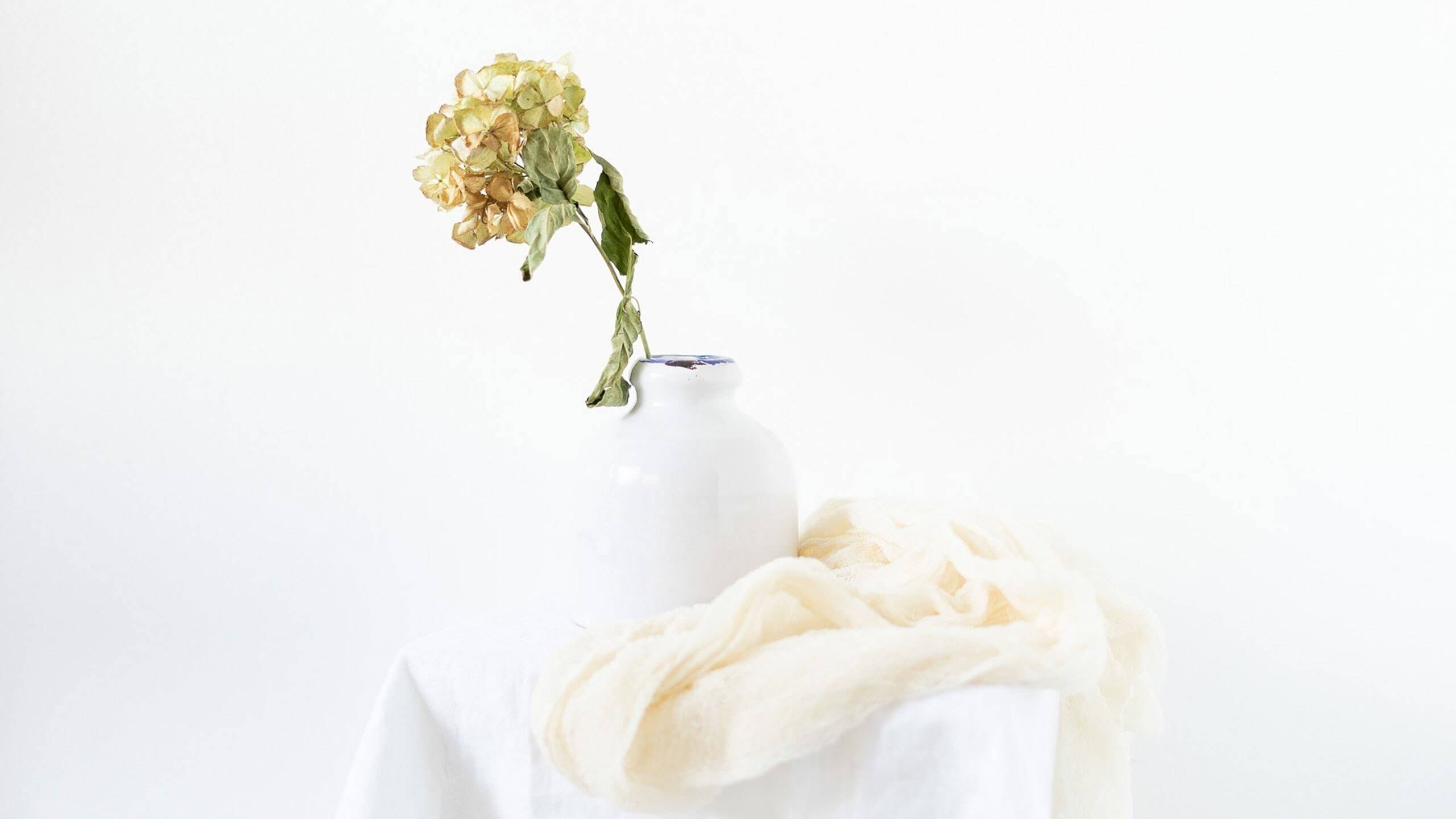Working with white on white, on white…
This week we are going to look at shooting with minimal color palettes and finding one beautiful ‘white’ (or neutral) thing. Then we’ll work with shades of white — backdrops, composition, styling and of course adding some lovely light. White is so calming … like a breath of fresh air … it gives me an instant sense of peace. It could be a flower, a vase, a jug or a piece of cloth.
Choose your Hero
Choose one thing — we’re going to keep to shades of white, cream or neutrals. Perhaps it is a jug or vase, some pretty flowers, fresh or dried or even synthetic. Or what about eggs in an egg carton? White crockery and linen? The list is endless, this item is going to be our Hero subject.
Now add some depth to neutrals using layers
Try creating a make-shift table from boxes or a chair or even using a table and placing a white sheet, tablecloth or fabric to cover it. Use a white wall as your backdrop, or a sheet of white cardboard or foam, or even another piece of fabric or a white door. You can make some really cool backdrops with white Perspex (Plexiglass) too! Unclutter your background; you want your ‘one thing’ to take the stage and stand out.
Now layer it up with some fabric or linen; even paper or napkins, it does not need to be fancy. Just to add some texture and layers, but still, keep it simple and clean. Try to keep it to three layers. Don’t get caught up in too much busyness, this style is simple and elegant and clean. Try a more modern twist.
Tip: Don’t forget to be near a light source, like a window.
All set, let’s begin
Once you gather your props and drops, find your light (next to a window, but not necessarily in front of it, unless it is indirect sunlight), and set your scene. Add a layer or two and take a photo. How does it look? Try shooting straight on — this might mean you need to crouch down, get down on your knees or use a stool. Shoot from below and shoot from above. How does each look?
Shooting tips for light and bright
Are your images too dark or are they blown out? You might have to adjust the metering in your camera. Up until now, you have may have been using just whatever your camera is set up to use. If you have a DSLR they generally do a pretty good job on light metering, especially spot metering, which means that the camera checks the light on your focal point. But when you are shooting white on white, on white … this often all falls down.
Your camera tries to compensate for the extra light reflected from all the white and make your images darker. So this is where you need to play and experiment. Try putting your camera on Spot Metering (check your manual for your camera for how to do this) and then shoot with 1, 2 or even 3 full stops over what your camera says, without blowing the details out completely. You want to grab just enough details in the highlights and shadows. This is going to come down to trial and error. You need to have nice, even flat light, but not lose the fine details.
If you are on your SmartPhone or Point & Shoot, they are generally going to adjust at their own level, but you can tweak them sometimes. Try Googling your phone or camera and adjusting light settings and see what you can find. There is also Lightroom for Mobile which gives you great adjustments as well.
Bouncing or reflecting light
Sometimes if your natural light is side light you can get intense shadows on your subject. Not that that is bad, it just might not be what you want. Try using a reflector, white card or foam core to bounce the natural light back onto your subject, to lift the light and show the details. Or perhaps you want things dark and moody — try moving your scene further away from your light source, creating deeper shadows.
A few tips for working with neutrals
If you are struggling with white on white, especially for focusing, try adding subtle color tones. Try to keep things light and airy and neutral in tones, creams, pastels, beige and off-whites work well.
Don’t just set the scene and take one photo. Move around and captured different angles, and different details, close up and pull back. On top, front on, slightly below, flat lay … the possibilities are endless. Pick up various accents in the shot for added interest.
It does not have to be white — you can apply a minimal palette to any color.
To create a cool, soft and summery look, try adjusting your white balance to add a little more blue (blue in white balance always makes look white and crisp). Or if you want a more warm summery feel, add a touch of yellow rather than blue in your white balance. There is no real right or wrong, just go with what YOU feel is aesthetically pleasing.
Source link





Leave a Reply